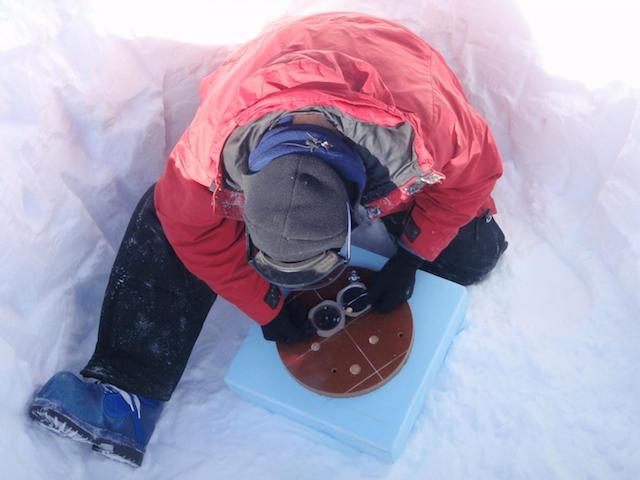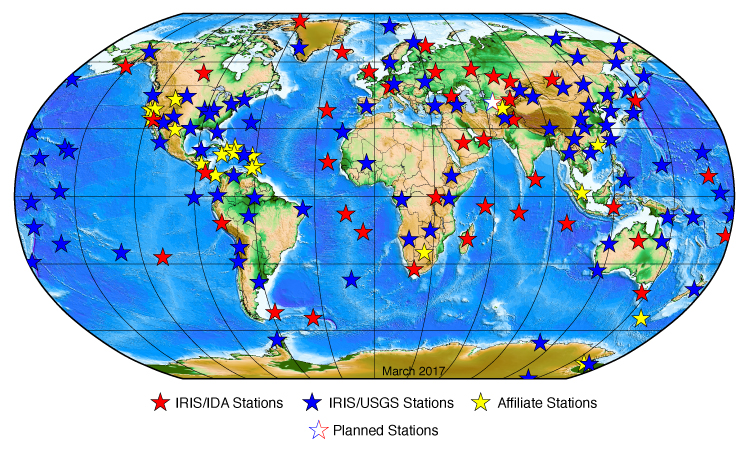Earthquake Scientists Say It's Time to Start Paying Attention to Antarctica
The continent has been rumbling this whole time.
By Sarah Sloat
on
East Antarctica is the coldest place on Earth. It is permanently covered in ice; there are no trees or shrubs, just bits of lichens, moss, and clinging algae. The idea that humans may not want to kick it there — or even think about it — is pardonable. But by avoiding the Earth’s icebox, a team of researchers argue a new Nature Geoscience paper, we’ve also ignored the massive continent’s terrifying geology: The frozen wasteland, they write, has earthquakes — and lots of them.
Until recently, they explain in their paper, the geologic structure and tectonic activity of East Antartica were relatively unknown. The first earthquake there was recorded in 1982, and only eight earthquakes have been reported since. Scientists had accepted the theory that East Antarctica just didn’t really experience earthquakes because its seismic activity was suppressed by the weight of the region’s thick ice. But that assumption, lead author and Drexel University professor Amanda Lough, Ph.D., explains to Inverse, isn’t true.
“East Antarctica shows comparable levels of seismicity as other stable cratons,” she says, referring to the geological term for the chunk of the Earth’s crust that makes up a continent’s backbone. “So at least for the East Antarctic Ice Sheet, the presence of a several-kilometer-thick ice sheet is not suppressing seismicity.”

Article continues below
Get stories that spark curiosity sent straight to your inbox.
In their study, Lough and her team did something no team had done before: They paid attention to the continent. In 2009 alone, Lough and her teammates detected 27 intraplate tectonic earthquakes in the interior of East Antarctica using a system of linked seismometers arranged in regular geometric patterns known as a seismic array. These quakes, she says, mark the first locally recorded seismicity in the region. It isn’t that East Antarctica is experiencing more quakes than it did in the past, when only eight had been observed: It’s that these 2.1- to 3.9-magnitude rockers are actually being recorded. “The seismicity would have always been there,” explains Lough, “but without seismic instruments in the area we are unable to detect it.”
For Lough and her team, setting up this seismic array system, the first winter-through-summer system to be set up in the region, meant living in the harsh Arctic environment and digging out runways to fly from point to point. Most of the seismic activity was recorded in basins near the Gumburtsev Subglacial Mountains, which the team believes are a part of an ancient continental rift system. Little activity was recorded outside the rifts, which is in line with previous research on seismic events: 52 percent of earthquakes are thought to occur in rifted crust. In a statement released Monday, Lough explained that the rifts “provide zones of weakness that enable faulting to occur more easily,” so it’s likely that seismic activity emerges when rifts are already weak.

The new Antarctic data contributes to our continually growing understanding of the planet’s tectonic plates. The Global Seismic Network tracks seismic activity in real time via 150 stations around Earth, but there are still some holes in its coverage. Antarctica is far from the final frontier of seismicity research as there’s still the world’s oceans, which casually cover 71 percent of the planet but aren’t exactly the easiest place to set up instrumentation.
“We have the broad picture understanding of the plates, boundaries, and how they interact down quite well — now we’re working towards understanding the smaller details,” says Lough. “We’re trying to understand the details of what makes one continent different from the others.”
No comments:
Post a Comment